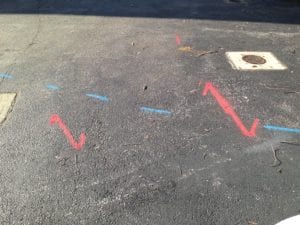What influences the cost of Phase II Environmental Site Assessments?
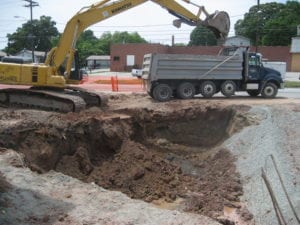 Environmental liabilities can greatly reduce by the value of a property. In fact, the cleanup liability could be even greater than the value of the property. However, a well-conducted environmental site assessment (ESA) can define potential risks so a great investment decision can be made.
Environmental liabilities can greatly reduce by the value of a property. In fact, the cleanup liability could be even greater than the value of the property. However, a well-conducted environmental site assessment (ESA) can define potential risks so a great investment decision can be made.
“But how can I figure out what a Phase II ESA will cost me?” It’s hard to say! Different regulatory agencies have different requirements, property owners/purchasers have different requirements, and there are different requirements for different types of spills and contamination. However, there are some things in common with all environmental assessments, and the following factors will play a large role in determining Phase II ESA costs:
- Underground utility mark outs
- Geophysical testing
- Soil excavation
- Underground storage tank testing
- Soil samples
- Installation of monitoring wells (and various aspects of the wells)
- Water samples
- Indoor air quality samples
- Final Report
Underground Utility Mark Outs
Site investigations typically include installation of soil borings and monitoring wells to determine soil and groundwater quality. Almost all drilling contractors call DigSafe or a related organization for an underground utility mark out. The utilities (water, sewer, gas, electric, and telephone) will mark the location of their underground lines that are located in the public right of way, at no cost. However, they do not mark out utilities on private property.
Many property owners elect to have a utility mark out conducted prior to conducting intrusive work. We have seen too often underground utilities that were damaged during drilling because of wrong as-built drawings, unknown easements, and unknown utilities. Repair to these utilities can be very expensive. The private utility mark out might cost a little extra, but it can also save thousands.
Geophysical Testing
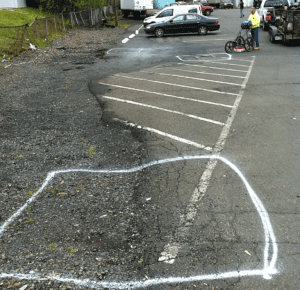
Geophysical testing is often used to investigate the suspected presence of buried tanks and drums. Special equipment is set up and passed over the ground to detect possible disturbances in soil and/or to reveal the presence of metal. An alternative to geophysical testing is digging holes. Digging holes on a property is very disruptive to business practices.
Soil Excavation
Areas marked by geophysical testing or areas suspected of containing buried waste or tanks may be investigated by excavating test pits. Test pits may expose tanks or drums and also provide a means for accessing soil and waste samples for laboratory analysis. The number of test pits and the size and depth of the excavation all impact cost. Drilling and sampling is a less disruptive alternative. However, it can be more expensive.
Underground Storage Tank Testing
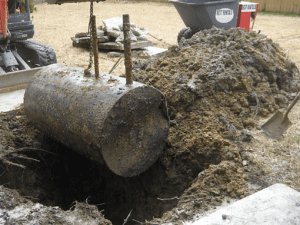
Operational storage tanks can be tested to confirm integrity. Permits, previous test records, and inventory records all can be reviewed for evidence of leaks or discharges. Whether the tank is tested and the appropriate testing method impact cost.
Soil Samples
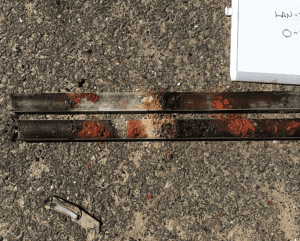
Soil samples are collected to characterize the extent of contamination adhered to soil particles. The issue becomes how many samples to collect, where to collect the samples and which analyses to run. During the initial site characterization, screening instruments can be used to provide an initial indication of the presence or absence of contamination which helps to identify areas for further quantification. Samples are submitted for laboratory analysis to determine if the soil meets state and/or Federal standards. The type of potential contaminant will dictate specific analytical testing methods.
Installation of Monitoring Wells
Where there is a possibility for groundwater contamination (an example would be a history of old underground storage tanks on the property), drilling equipment is utilized to install monitoring wells. Soil samples can be collected during well installation and then groundwater samples can be obtain once the wells are installed and developed. Many factors influence the cost of the wells:
Depth of Wells
Your cost will depend upon the depth of the wells. In some cases, a well will only need to be drilled 10 feet before reaching groundwater. In other cases, the well may have to be drilled over 100 feet before reaching water. Depending upon the nature of the spilled material, the well depth may also have to be deeper.
Composition of Subsurface
Drilling through sand is relatively easy and requires simple technologies. When drilling a shallow well through sand or a similar soil, we may be able to use an auger or direct push technology to quickly install wells. If we are drilling through rock, a more complex and expensive technology is necessary.
Type of Site
Different sites may have different access issues. Certain types of drill rigs may not be able to access particular areas if there are topographical and/or structural access obstacles. There are different costs associated with different types of drill rigs and technologies.
Number of Wells
The number of wells that need to be drilled depends on how far the contaminants have traveled. If the spill is contained to a relatively small area, only three or four wells may be needed to define the area of contamination. Conversely, if the contaminants have spread over a large area, many monitoring wells may be required.
Water Samples

Water samples may be collected from monitoring wells, surface water bodies, and drinking water wells. Samples are submitted to a laboratory for chemical analysis. The nature of the spilled material and the requirements of the controlling regulatory agency will dictate the required analytical methods. The number of samples, type of analyses, and the suspected contaminants will impact cost.
Indoor Air Quality samples
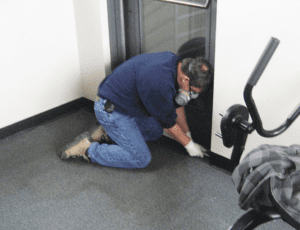
The presence of biological and chemical contaminants can impact indoor air quality. Indoor air quality concerns include radon, mold, Volatile Organic Compounds (VOCs), asbestos, and carbon monoxide. Each of these pollutants presents a different health concern, thus requiring different sampling methods. Air samples can be collected for biological and chemical analysis with Summa Canisters, Tedlar bags, and airtight syringes. Sometimes, field instrumentation can be used to provide an indicator of potential contaminants while other times laboratory analysis is required. The number of samples, appropriate sampling method, and type of analysis impact the cost.
Final Report
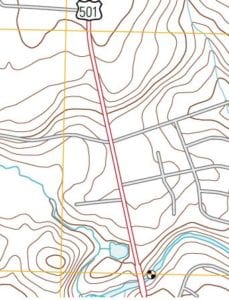 The end product of an Environmental Site Investigation is the final report. The content requirements for the report are specific to the property owner/purchaser, the nature of the contaminant that was spilled at the site and to the requirements of the state or federal environmental agency that may eventually provide oversight of the work.
The end product of an Environmental Site Investigation is the final report. The content requirements for the report are specific to the property owner/purchaser, the nature of the contaminant that was spilled at the site and to the requirements of the state or federal environmental agency that may eventually provide oversight of the work.
Extensive contamination that occurs in a highly sensitive area may require much more investigation than a small spill in a non-sensitive area. Fluctuations in final price depend upon each type of sample, the extent of drilling, digging, or excavation, the method used to conduct the investigation, and the detail required for preparation of the ESA report.
If you would like to discuss the environmental concerns on your property, please contact us or take advantage of our free consultation!

